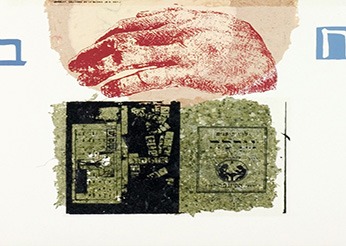"They enjoyed the scent of his clothes blessed by his forefathers": The encounter of Rabbi Jacob Saphir with the Holy 'Sayeed' in Yemen
The encounter of Rabbi Jacob Saphir with the Holy 'Sayeed' in Yemen
DOI :
https://doi.org/10.17851/1982-3053.13.25.189-198Mots-clés :
Jacob Saphir, Body, Odors, MoralRésumé
Although body odor is a completely natural feature, smells emanating from the human body or clothes have been perceived throughout history as a manifestation of one's spiritual world and moral identity. The current study discusses the encounter of Rabbi Jacob Saphir (1822-1886), a famous Jewish traveler, with honorable Muslim. During the event the followers of the holy man do not touch him but smell the special scent of his clothes. The unusual event illustrating the social significance of the odor emitted by distinguished figure's body or clothes among Muslims. It also demonstrates a new insight of Saphir concerning the meaning of body odors in Jewish scriptures.
Téléchargements
Références
ASHBROOK HARVEY, Susan. Olfactory Knowing: Signs of Smell in the Lives of Simeon Stylites. In: Reinink, Gerrit J. and Klugkist, Alexander C. (Ed.). After Bardaisan: Studies on Continuity and Change in Syriac Christianity in Honor of Han J. W. Drijvers. Leuven: Peeters Press, 1999.
ASHBROOK HARVEY, Susan. Scenting Salvation: Ancient Christianity and the Olfactory Imagination. Berkeley: University of California Press, 2006.
BABYLONIAN TALMUD. Vilna: Re'em, 1882.
CLASSEN, Constance. The Odor of the Other: Olfactory Symbolism and Cultural Categories. Ethos, 20[2] (1992), p. 133-166.
EISENSTEIN, David. Encyclopaedia Otzar Israel. New York: Pardes, 1952.
EVANS, Suzanne. The Scent of a Martyr. Numen, n. 49, p. 193-211, 2002.
GENESIS RABBAH. Theodor, Julius, and Albeck, Ḥanoch edition. Berlin: Itzkowski, 1903.
HORKHEIMER, Max and ADORNO, Theodor W. Dialectic of Enlightenment: philosophical fragments. Stanford, California: Stanford University Press, 2002.
IDELMAN SMITH, Jane; HADDAD, Yvonne Yazbeck. The Islamic Understanding of Death and Resurrection. Albany: State University of New York Press, 1981.
JÜTTE, Robert. A History of the Senses: From Antiquity to Cyberspace (translation by James Lynn). Cambridge and Malden: Polity Press, 2005.
LARGEY, Gale P. and WATSON, David R. The Sociology of Odors. American Journal of Sociology, n. 77, p. 1021-1034, 1972.
MIDRASH TANḤUMA. Buber, Solomon edition. Vilna: Re'em, 1885.
PESIKTA ZUTRATA (Lekach Tov). Buber, Solomon edition. Vilna: Reem, 1880.
RITCHIE, Ian D. The Nose Knows: Bodily Knowing in Isaiah 11:3. JSOT, 87 (2000), p. 59-73.
RIVLIN, Joseph Joel. Rabbi Jacob Saphir. Moznayim, n. 11, p. 74-81, 1940.
ROTHENBERG, Mordechai. Of Life and Immortality: Images of Paradise as Modifiers of Behavior: Christianity, Islam, Judaism. Jerusalem: Beit Reuben Mass, 2008. [Heb.]
SAPHIR HALEVY, Jacob. Even Sapir. Lyck and Mayence: Meikitze Nirdamim, 1866-1874.
SHARON, Moshe. The Bahá'í Faith and its Holy Writ, the Most Holy book (al-Kitdb al-Aqdas) in Hebrew Translation. Jerusalem: Carmel, 2008. [Heb.]
SHEMESH, Abraham. O. "The Fragrant of Paradise": Smells, Perfumes and Incense in Jewish Tradition: Customs, Beliefs and Symbols. Ramat Gan: Bar Ilan University Press, 2017 (Heb.)
SINGER Isidore and OCHSER, Schulim. "Saphir, Jacob (known also as Eben Sappir)". In: Singer, Isidore et al. (eds.). Jewish Encyclopaedia. New York: Funk & Wagnalls, 1906.
SONG OF SONGS RABBA. Vilna: Reem, 1885–1887.
Téléchargements
Publiée
Numéro
Rubrique
Licence
(c) Copyright Arquivo Maaravi: Revista Digital de Estudos Judaicos da UFMG 2020

Ce travail est disponible sous la licence Creative Commons Attribution 4.0 International .
Os direitos autorais pertencem exclusivamente aos autores. Os direitos de licenciamento utilizados pelo periódico é a licença Creative Commons Attribution 4.0 (CC BY 4.0): são permitidos o compartilhamento (cópia e distribuição do material em qualquer meio ou formato) e adaptação (remix, transformação e criação de material a partir do conteúdo assim licenciado para quaisquer fins, inclusive comerciais.






